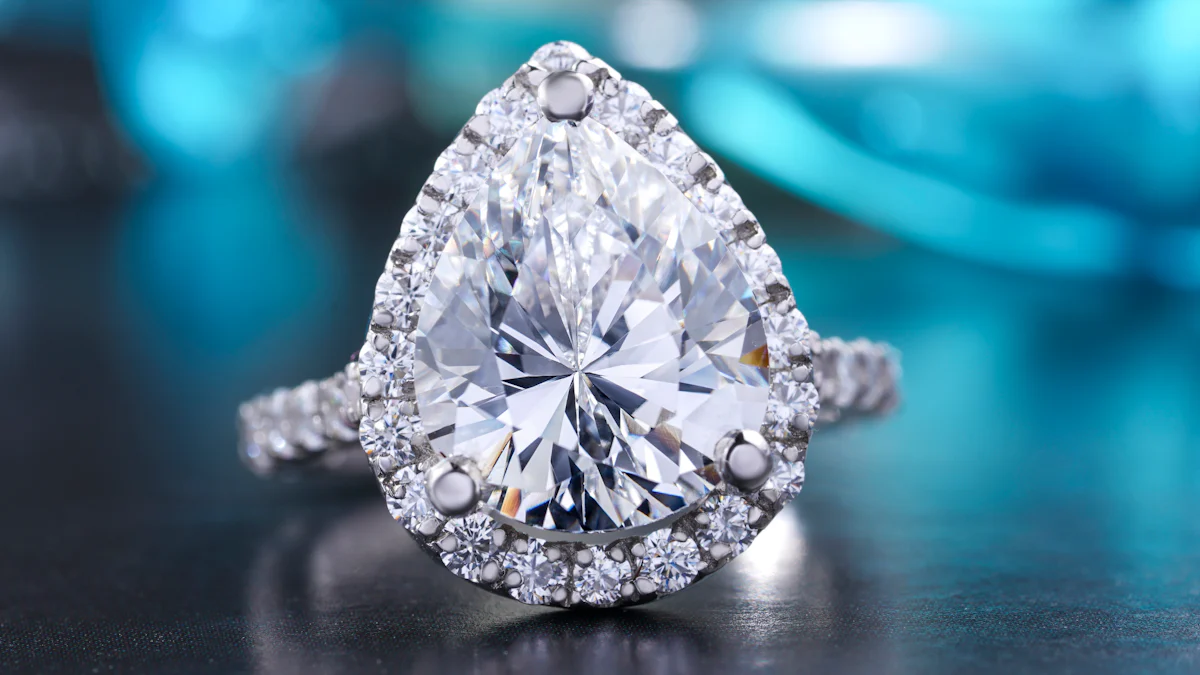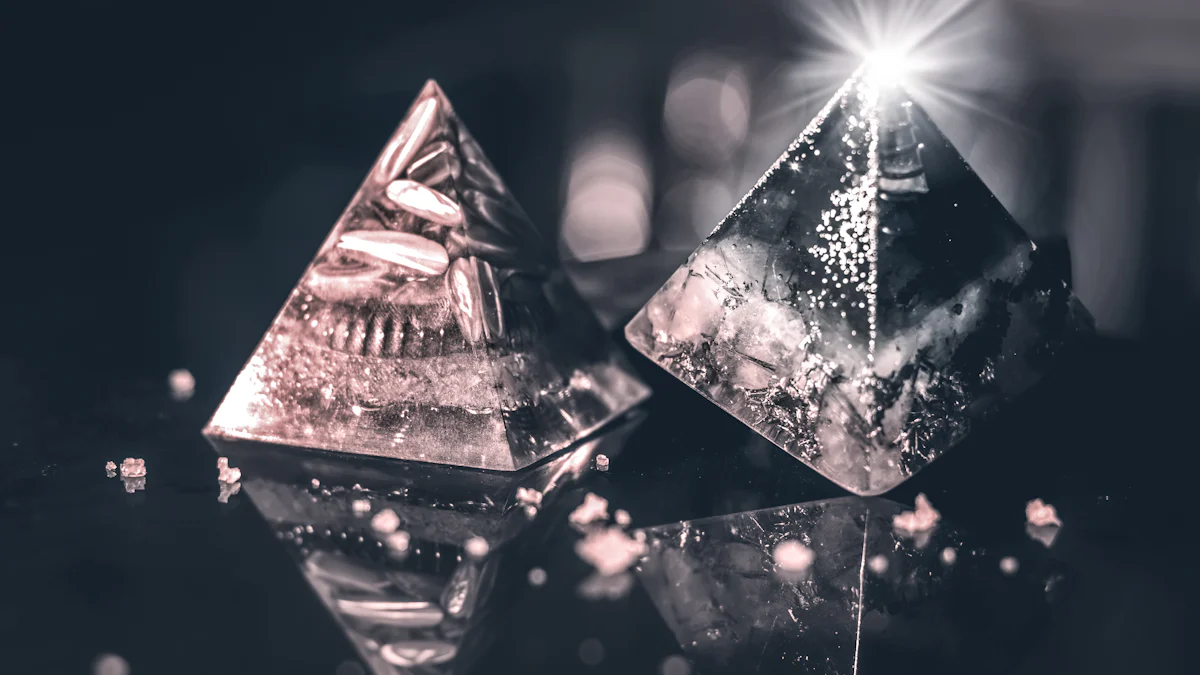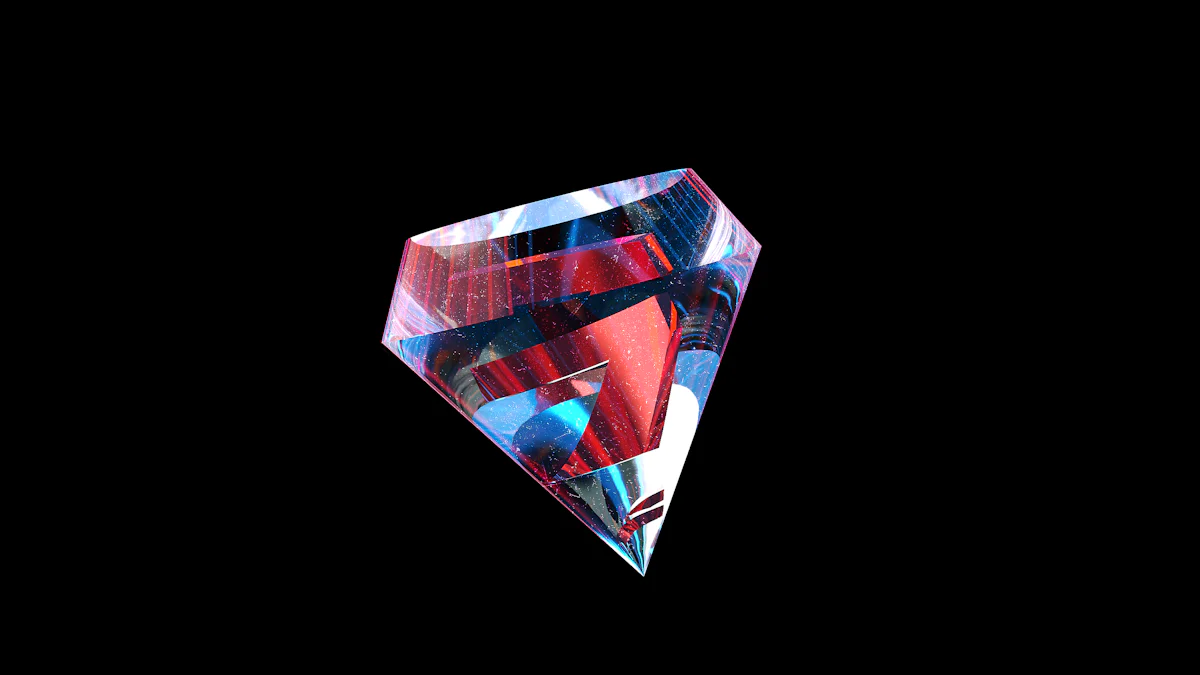VS Diamond vs VVS: Which One Shines Brighter?

When choosing a diamond, understanding the differences between VS diamonds, VVS diamonds, and their clarity levels plays a crucial role in their appearance and value. VVS diamonds, known for their exceptional clarity, contain inclusions so small they are nearly impossible to detect under magnification. This makes them a top choice for those seeking superior quality. On the other hand, VS diamonds offer slightly lower clarity but often provide better value for buyers. For instance, a VVS2 diamond can cost 10% to 30% more than a comparable VS2 diamond. Your decision between VS diamond vs VVS diamond depends on your budget, priorities, and the diamond's size and cut.
Understanding VS and VVS Diamonds

What Is a VS Diamond?
A VS diamond, short for "Very Slightly Included," is a diamond with minor inclusions that are typically invisible to the naked eye. These inclusions become noticeable only under 10x magnification. Gemologists use the GIA clarity scale to classify VS diamonds into two subcategories: VS1 and VS2. VS1 diamonds have fewer and smaller inclusions compared to VS2 diamonds, making them slightly higher in clarity.
Common inclusions in VS diamonds include crystals, knots, clouds, feathers, and cavities. These inclusions are small enough that they rarely affect the diamond's brilliance or sparkle. Gemologists evaluate VS diamonds by examining the type, size, location, and number of inclusions under magnification. This grading process ensures that VS diamonds maintain a balance between clarity and affordability, making them a popular choice for buyers seeking quality without overspending.
What Is a VVS Diamond?
A VVS diamond, or "Very Very Slightly Included" diamond, represents a higher level of clarity. These diamonds have inclusions so tiny that even expert gemologists find them extremely difficult to detect under 10x magnification. VVS diamonds are further divided into VVS1 and VVS2. VVS1 diamonds have inclusions that are nearly impossible to see, while VVS2 diamonds have inclusions that are slightly easier to spot but still very challenging.
The inclusions in VVS diamonds often consist of pinpoints, needles, or internal graining. These blemishes and inclusions are invisible to the naked eye, making VVS diamonds an excellent choice for those who prioritize perfection. The exceptional clarity of VVS diamonds contributes to their premium price, as they are considered among the finest on the diamond clarity scale.
Key Differences in Clarity and Inclusions
The primary difference between VS and VVS diamonds lies in the visibility of their inclusions. Under 10x magnification, inclusions in VS diamonds are more noticeable compared to those in VVS diamonds. While VVS diamonds have inclusions that are nearly impossible to detect, VS diamonds may have inclusions that are easier to identify but still invisible to the naked eye.
| Clarity Grade | Inclusion Visibility Under 10x Magnification | |---------------|---------------------------------------------| | VVS Diamonds | Extremely difficult to detect, even for experts | | VS Diamonds | More noticeable inclusions, some may be eye-visible |
VVS diamonds, with their superior clarity, are ideal for buyers seeking perfection. On the other hand, VS diamonds offer a balance between clarity and value, making them a practical choice for those who want a high-quality diamond without exceeding their budget.
Clarity and Its Impact on Diamond Appearance

Can You See the Difference Between VS and VVS?
You might wonder if the difference between a VS diamond and a VVS diamond is noticeable to the naked eye. In most cases, it isn’t. Both VS (Very Slightly Included) and VVS (Very Very Slightly Included) diamonds are considered "eye-clean," meaning their inclusions are not visible without magnification. However, under 10x magnification, the inclusions in a VS diamond are easier to spot compared to those in a VVS diamond.
The table below highlights the differences:
| Feature | VS Diamonds | VVS Diamonds | |------------------------|--------------------------------------|---------------------------------------| | Inclusions Visibility | Minor, eye-visible inclusions possible | Completely eye-clean | | Magnification Level | Easier to detect inclusions at 10x | Difficult to find inclusions at 10x | | Grader Difficulty | Slightly easier to observe inclusions | Extremely difficult to observe inclusions |
If you’re looking for perfection, VVS clarity diamonds are the better choice. However, if you want a balance between quality and value, a VS diamond offers excellent clarity without the premium price tag.
When Does Clarity Matter Most?
Larger Diamonds
Clarity becomes more critical as the diamond size increases. Larger diamonds, such as those over 2 carats, tend to magnify inclusions. Even minor blemishes and inclusions that are invisible in smaller stones may become noticeable in larger ones. Choosing a higher clarity grade, like VVS1 diamonds, ensures the diamond maintains its brilliance and sparkle.
- Higher clarity grades allow light to pass through unobstructed, enhancing brilliance and fire.
- Lower clarity grades may scatter or absorb light, reducing sparkle.
- Inclusions in larger diamonds can disrupt light reflection and refraction, diminishing optical effects.
Specific Cuts (e.g., Emerald or Asscher)
Certain diamond cuts, such as Emerald or Asscher, emphasize clarity due to their step-cut faceting. These cuts have large, open facets that make inclusions more visible. For these shapes, clarity characteristics play a significant role in the diamond’s appearance. A VVS diamond, with its nearly flawless clarity, is ideal for these cuts. On the other hand, brilliant cuts like Round or Princess can mask inclusions better, making a VS diamond a more practical choice.
Understanding when clarity matters most helps you make an informed decision. Whether you prioritize size, cut, or budget, clarity remains a key factor in determining a diamond’s beauty and value.
Comparing Quality and Value
Price Differences Between VS and VVS Diamonds
When comparing the cost of a VS diamond to a VVS diamond, the price difference can be significant. VVS diamonds, known for their exceptional clarity, often cost up to 40% more than VS diamonds of similar size and cut. For instance, a 1.00-carat D color VVS1 diamond is considerably more expensive than a comparable VS1 diamond with the same weight and color. On average, a VS1 diamond with similar characteristics costs 10% to 30% less than a VVS diamond. This price gap reflects the rarity and superior clarity of VVS diamonds.
Market trends also influence diamond prices. Consumer demand and unique features, such as rare color undertones, can drive up the cost of VVS diamonds. If you prioritize affordability, a VS diamond offers excellent value without compromising on beauty.
Which Offers Better Value for Buyers?
Budget-Conscious Buyers
If you’re working within a budget, a VS diamond is a smart choice. These diamonds balance quality and affordability, offering eye-clean clarity at a lower price. The inclusions in very slightly included diamonds are typically invisible to the naked eye, making them a practical option for buyers who want a beautiful diamond without overspending. By focusing on other factors like cut and color, you can maximize the diamond’s brilliance while staying within your budget.
Perfectionists or Collectors
For those who value perfection, a VVS diamond is the ideal investment. The nearly flawless clarity of very very slightly included diamonds appeals to collectors and perfectionists seeking the highest diamond quality. VVS1 diamonds, in particular, are prized for their rarity and exceptional beauty. If you’re looking for a diamond that stands out in terms of clarity and grade, a VVS diamond is worth the premium price.
When deciding between VS and VVS diamonds, consider the 4 C’s—Color, Clarity, Cut, and Carat Weight. These factors, along with your personal preferences, will help you determine which diamond offers the best value for your needs.
Tips for Choosing Between VS and VVS Diamonds
Assessing Your Budget and Priorities
When deciding between a VS diamond and a VVS diamond, your budget plays a crucial role. Start by evaluating your financial situation. Review your income, expenses, and any outstanding debts. This helps you determine a comfortable spending limit. Once you have a budget in mind, think about your priorities. Do you value flawless clarity, or are you looking for the best balance between quality and cost?
To make the most of your budget, consider how the 4Cs—cut, color, clarity, and carat weight—affect a diamond’s value. For instance, you can choose a slightly lower clarity grade, like VS, and pair it with a higher color grade to achieve a visually stunning diamond. Alternatively, if brilliance is your top priority, investing in a higher clarity grade, such as VVS1 diamonds, might be worth the premium.
Market trends also influence diamond prices. Understanding these trends can help you make informed decisions. By focusing on what matters most to you, you can find a diamond that fits your budget without compromising on beauty or value.
Viewing Diamonds in Person or Using High-Quality Images
Whether you shop in person or online, examining the diamond closely is essential. If you’re buying online, look for high-resolution images and videos that showcase the diamond from multiple angles. Pay attention to the inclusions and clarity characteristics visible in the images. This helps you confirm whether the diamond is truly eye-clean.
Choose a reputable seller who provides independent grading reports from trusted organizations like GIA or AGS. These reports verify the diamond’s clarity grade, cut, and other important details. A good return policy is also crucial. It allows you to inspect the diamond in person after purchase and ensures you can return it if it doesn’t meet your expectations.
If you’re shopping in person, use a jeweler’s loupe to examine the diamond under magnification. This lets you see the inclusions and assess the clarity firsthand. Educating yourself on the 4Cs beforehand will help you make confident decisions. Whether you choose a VS diamond or a VVS diamond, understanding its clarity and overall quality ensures you get the best value for your investment.
When deciding between a VS diamond and a VVS diamond, clarity plays a pivotal role. VVS diamonds, with their minimal inclusions and near-perfect clarity, stand out as a premium choice. Their classifications, VVS1 and VVS2, ensure inclusions remain nearly invisible, even under magnification. This exceptional clarity enhances their desirability and market value.
On the other hand, VS diamonds offer a better balance of quality and value. These diamonds maintain an eye-clean appearance while being more affordable. Compromising slightly on clarity allows you to enhance other attributes, such as cut or color, without exceeding your budget. For many buyers, the price difference—often 10% to 30%—makes VS diamonds a practical choice.
Ultimately, the "better" option depends on your priorities. If you seek perfection, a VVS diamond may suit you. If you value affordability and beauty, a VS diamond provides an excellent alternative. Consider your budget, preferences, and the diamond's characteristics to make the best decision for your needs.
FAQ
What does "eye-clean" mean in diamond clarity?
"Eye-clean" means you cannot see inclusions or blemishes in a diamond without magnification. Both VS and VVS diamonds are typically eye-clean, ensuring they appear flawless to the naked eye.
Should you prioritize clarity over cut when buying a diamond?
No, cut impacts a diamond's brilliance more than clarity. A well-cut diamond sparkles beautifully, even with minor inclusions. Prioritize cut first, then consider clarity based on your budget and preferences.
Are VVS diamonds worth the higher price?
VVS diamonds are worth it if you value near-perfect clarity and rarity. However, if inclusions are not visible, a VS diamond offers similar beauty at a lower cost.
Does diamond clarity affect its sparkle?
Yes, clarity affects sparkle. Fewer inclusions allow light to pass through the diamond more effectively. However, cut quality has a greater impact on brilliance than clarity.
Can you tell the difference between VS and VVS diamonds without magnification?
No, you cannot see the difference without magnification. Both VS and VVS diamonds appear eye-clean, making them visually identical to most buyers.
See Also
Evaluating Diamond Rings With Gold Bands From Leading Brands
A Detailed Look At Tungsten And Classic Diamond Rings
Price Comparison For All Around Diamond Rings

